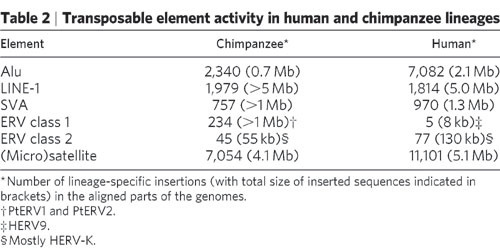Replying to your post in another thread.

According to the first line of table 2 there are almost 5,000 differences in Alu alone, so how did you get to “Less than 400 of those 203,000 are different.”. I’m not a geneticist so you might have to explain that to me.